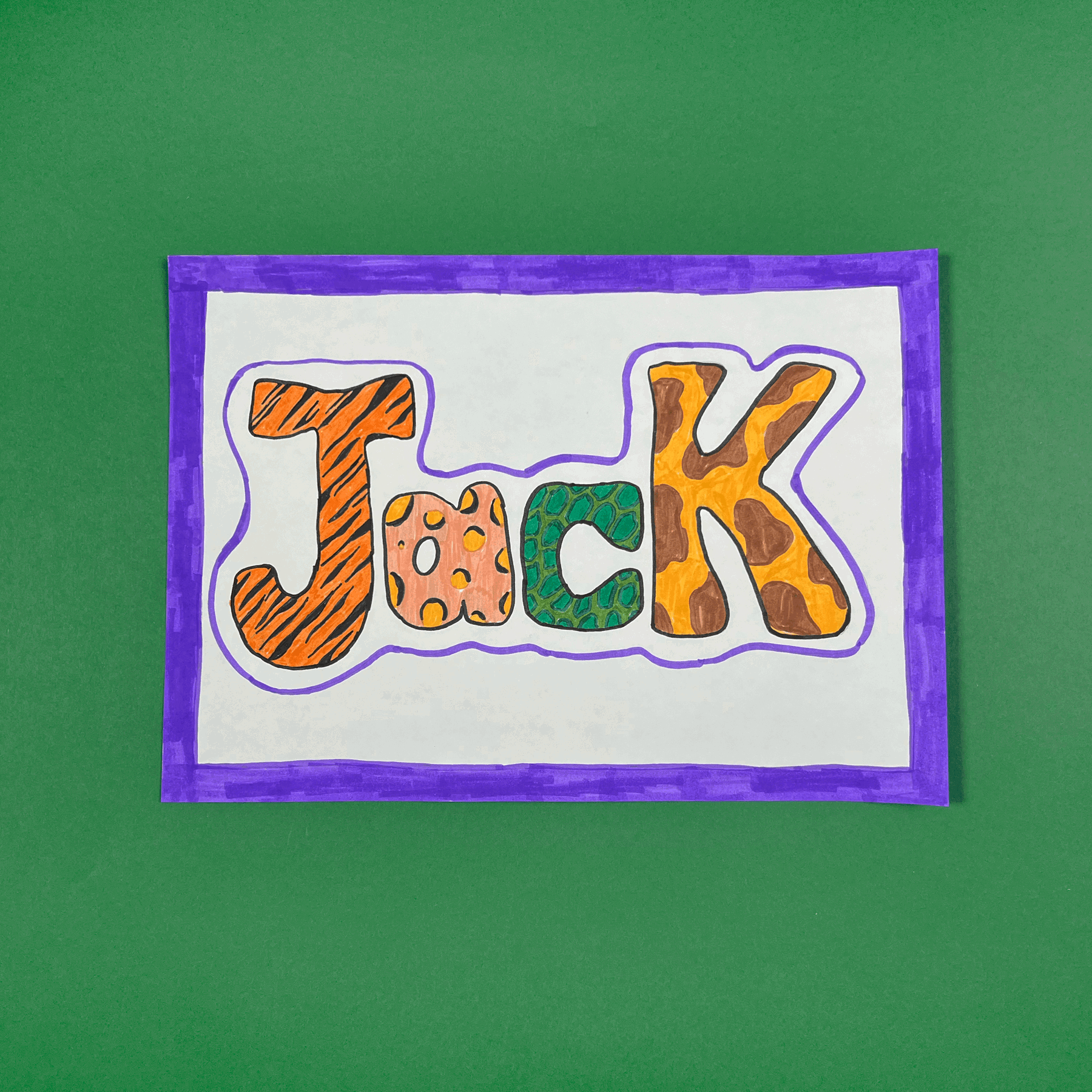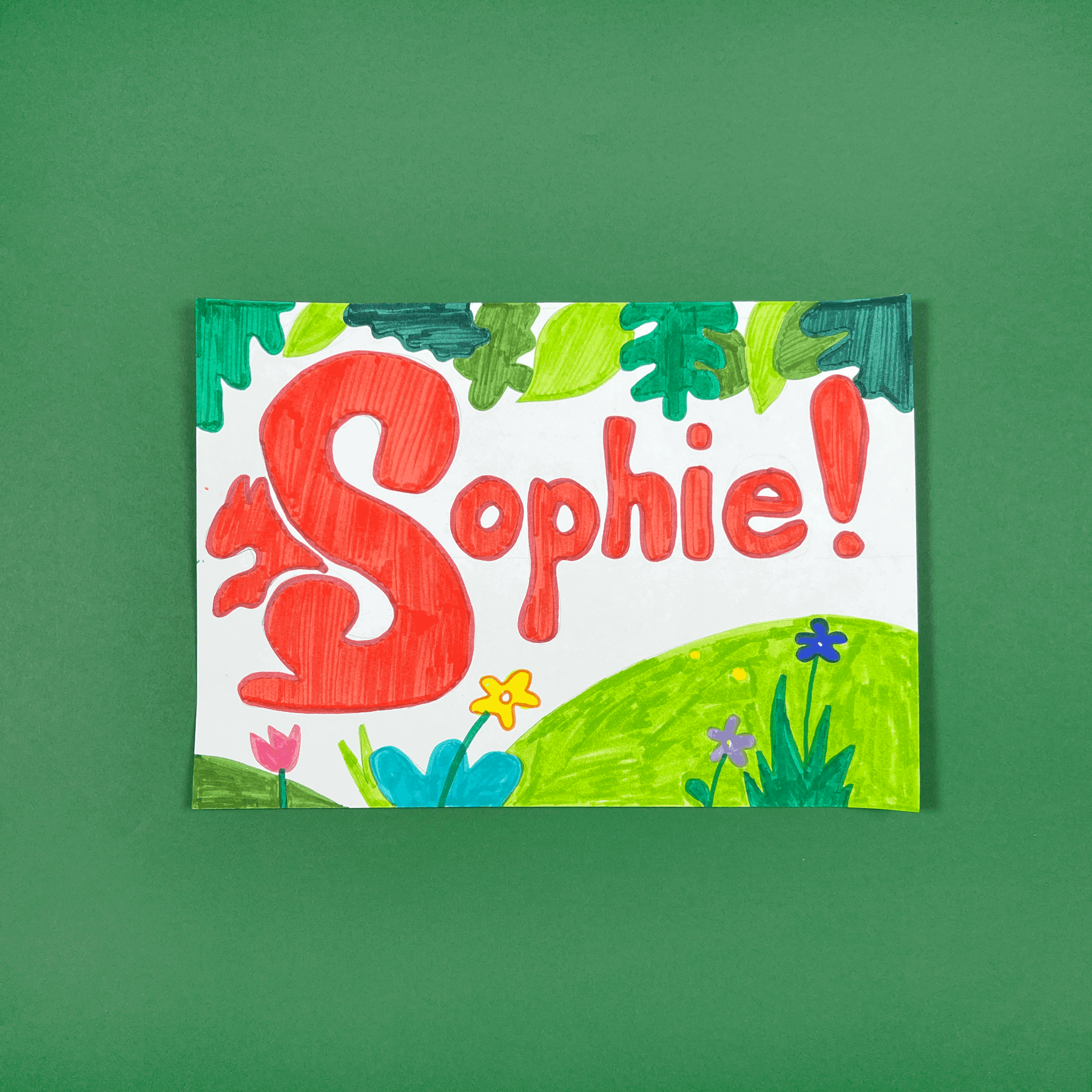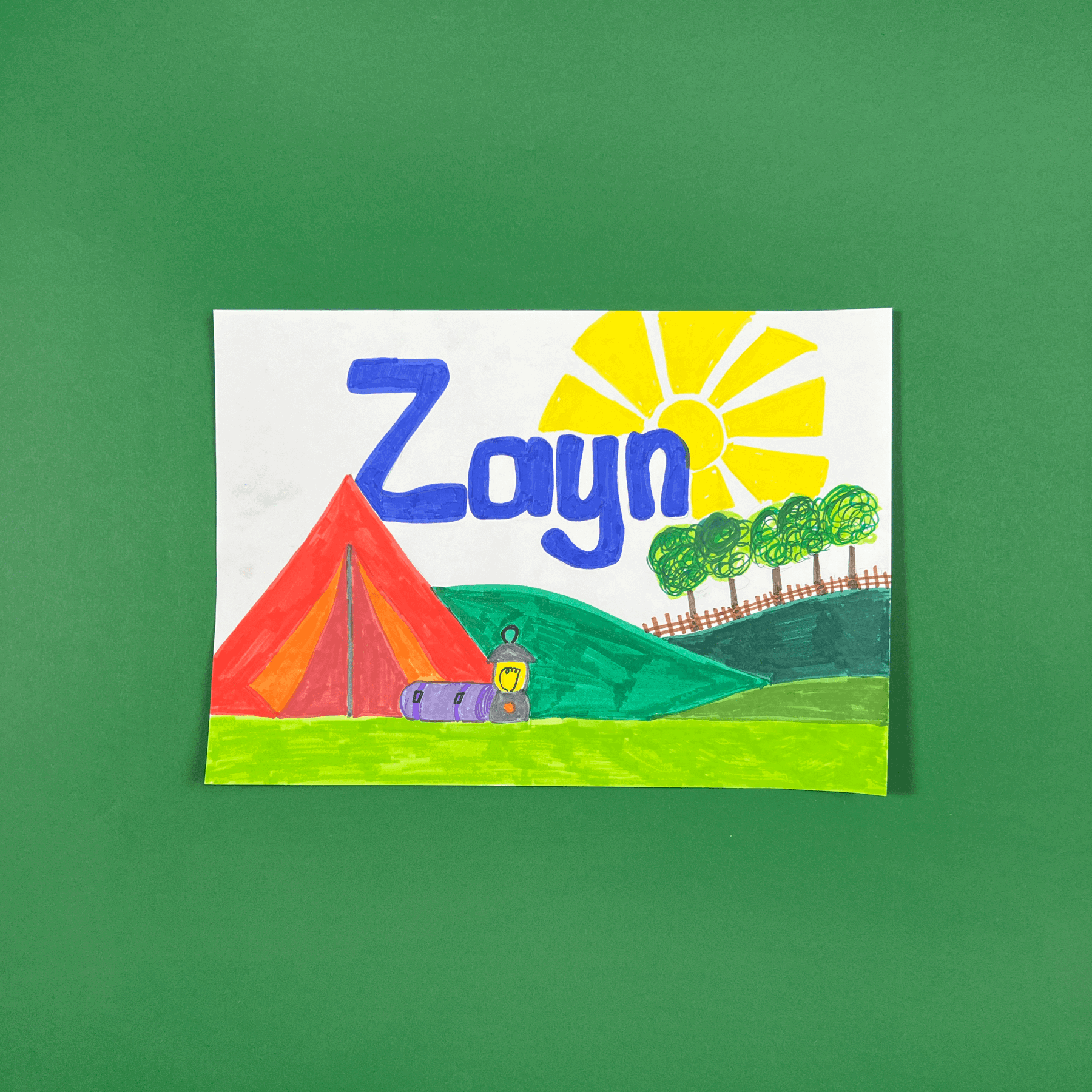
Make personalised placemats
You’ll need
- A4 paper
- Coloured pens or pencils
- A4 card
- Permanent markers
- Rulers
- Crayons
- Felt tips
- Laminator
- Laminating paper
- Sticky back plastic (optional)
Before you begin
- Use the safety checklist to help you plan and risk assess your activity. Additional help to carry out your risk assessment, including examples. Make sure all young people and adults involved in the activity know how to take part safely.
- Make sure you’ll have enough adult helpers. You may need some parents and carers to help if you’re short on helpers.
Setting up this activity
- Set up an area to use pens and crayons in. You may want to use tables and chairs.
- If you want to laminate the placemats, only use felt tips, crayons and pencil crayons to prevent damaging the artwork or the laminator.
- Rather than laminating the placemats, you could also seal them tightly in sticky back plastic.
- You could use these placemats as signs for rooms or to tie to luggage, as well as placemats while on camp.
- An adult should always supervise the laminator and it should be placed on a flat, smooth, heat-proof surface.
Running this activity
- Gather everyone together and tell everyone you’re going to making personalised placemats. They’ll be made to be waterproof, and can be either taken home or saved to use on an upcoming camp to help with laying the table.
- Ask if people can think what else you could use them for. You could use them as door signs for rooms or use them in games. You could also hole punch them and add ribbon to tie them to luggage to know which one belongs to who.
- Tell everyone they can design the placemats however they want to. They should include their name, but can be as creative as they’d like.
- People could be inspired by their favourite book characters, favourite bands or films, what they like to eat, things they like doing or make them bright patterns.
- For younger sections, they may want to draw a plate, knife, fork, spoon and cup to show where they go.
- When you’re ready, set up and turn on the laminator, making sure an adult is always with it. It can get very hot, so make sure there’s a safe, flat heat-proof surface to place it on while it’s in use and cooling down.
- Once everyone has finished, place each sheet in a laminating pouch. An adult should laminate the placemats, so they’re ready for use. Remember to watch fingers near the laminating machine. Put them to one side to cool down after being through the machine.
- Alternatively, you can wrap them in sticky back plastic.
- You could get back together as a group and ask people who are happy to show their designs to everyone else.



Reflection
This activity gives everybody the opportunity to be creative, develop their skills and make something really useful.
This activity was all about making a placemat. How did you find it? How did you come up with your pattern or design? What did you add to it to make it personal to you?
If you’ve seen other people’s designs, what do you like about them? What can help you know it belongs to them?
Safety
All activities must be safely managed. You must complete a thorough risk assessment and take appropriate steps to reduce risk. Use the safety checklist to help you plan and risk assess your activity. Always get approval for the activity, and have suitable supervision and an InTouch process.
- Scissors
Supervise young people appropriately when they’re using scissors. Store all sharp objects securely, out of the reach of young people.
- Glue and solvents
Always supervise young people appropriately when they’re using glue and solvent products. Make sure there’s plenty of ventilation. Be aware of any medical conditions that could be affected by glue or solvent use and make adjustments as needed.
- Hot tools
Tools, such as irons and glue guns, produce a lot of heat. Never touch the hot metal parts. Use them under adult supervision and on a suitable surface, protecting it if necessary. Never leave hot tools unattended and be careful near combustible materials such as wood, textiles, or paper. Make sure there’s a fire extinguisher and a first aid kit (with items to treat burns) nearby. Always follow the manufacturer’s instructions for proper use. You may need to use gloves and safety goggles with glue guns.
- Electrical equipment
Inspect cables for any damage before each use. A responsible adult should supervise people using equipment, and people should follow instructions on how to use them correctly and safely. They should be properly maintained and stored. Be extra cautious of trailing cables and water when using electric equipment.
- To make this activity easier, you could have templates for people to colour in, rather than designing their own.
- You could use different materials and tools for people to craft, paint, draw or print with, so there’s a range of items for people to feel included and be able use easily. For example, people could use rounder egg shaped crayons or different skin toned felt tips.
- You can adapt the thickness of the paper, so it's suitable or easier for everyone to use.
- Make sure that all the materials are at a level that can be easily worked on by wheelchair users.
- Some arts and craft activities may involve touching certain textures or items or involve getting messy. People should only do this if they’re comfortable too. People could wear plastic gloves if they don’t like the feeling of a certain material on their hands.
All Scout activities should be inclusive and accessible.